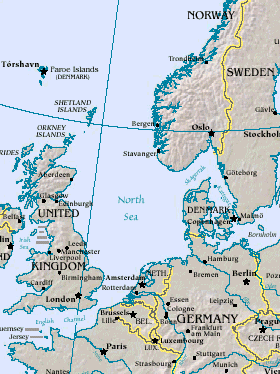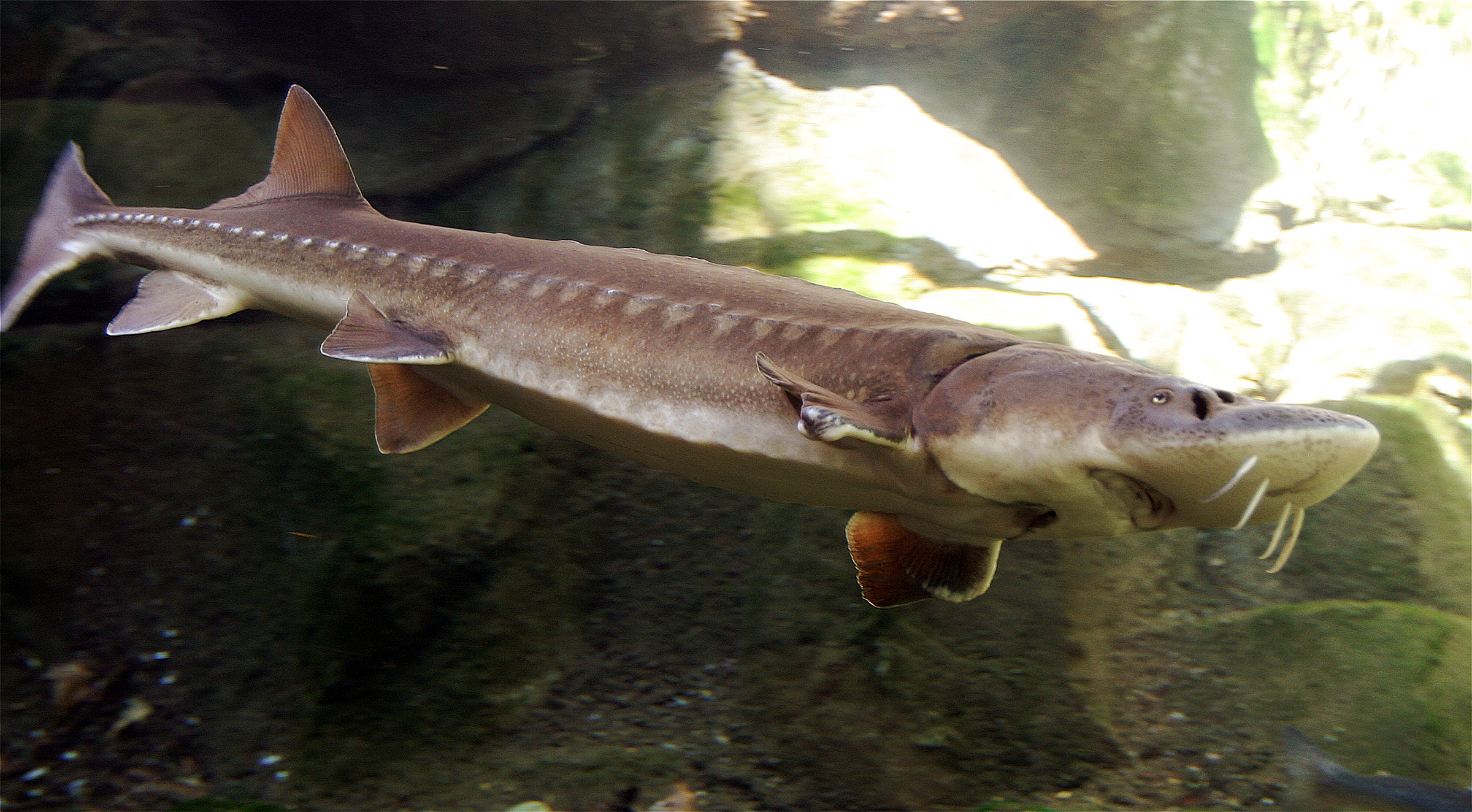Fishing in the North Sea on:
[Wikipedia]
[Google]
[Amazon]

 Various agreements have been made in the course of history. A 15th-century document illustrates shared use, and the "London convention on fisheries" was signed in 1964.
The OSPAR commission manages the
Various agreements have been made in the course of history. A 15th-century document illustrates shared use, and the "London convention on fisheries" was signed in 1964.
The OSPAR commission manages the

Fishing
Fishing is the activity of trying to catch fish. Fish are often caught as wildlife from the natural environment, but may also be caught from stocked bodies of water such as ponds, canals, park wetlands and reservoirs. Fishing techniques inclu ...
in the North Sea
The North Sea lies between Great Britain, Norway, Denmark, Germany, the Netherlands and Belgium. An epeiric sea, epeiric sea on the European continental shelf, it connects to the Atlantic Ocean through the English Channel in the south and the ...
is concentrated in the southern part of the coastal waters. The main method of fishing is trawling
Trawling is a method of fishing that involves pulling a fishing net through the water behind one or more boats. The net used for trawling is called a trawl. This principle requires netting bags which are towed through water to catch different spec ...
.
Annual catches grew each year until the 1980s, when a high point of more than 3 million metric tons (3.3 million S/T) was reached. Since then, the numbers have fallen back to around 2.3 million tons (2.5 million S/T) annually with considerable differences between years. Besides the fish caught, it is estimated that 150,000 metric tons (165,000 S/T) of unmarketable by-catch
Bycatch (or by-catch), in the fishing industry, is a fish or other marine species that is caught unintentionally while fishing for specific species or sizes of wildlife. Bycatch is either the wrong species, the wrong sex, or is undersized or juve ...
are caught and around 85,000 metric tons (94,000 S/T) of dead and injured invertebrate
Invertebrates are a paraphyletic group of animals that neither possess nor develop a vertebral column (commonly known as a ''backbone'' or ''spine''), derived from the notochord. This is a grouping including all animals apart from the chordate ...
s.
Of the caught fish, about half are used for the production of fish oil
Fish oil is oil derived from the tissues of oily fish. Fish oils contain the omega-3 fatty acids eicosapentaenoic acid (EPA) and docosahexaenoic acid (DHA), precursors of certain eicosanoids that are known to reduce inflammation in the b ...
and fish meal.
History
Sturgeon, shad,rays
Ray may refer to:
Fish
* Ray (fish), any cartilaginous fish of the superorder Batoidea
* Ray (fish fin anatomy), a bony or horny spine on a fin
Science and mathematics
* Ray (geometry), half of a line proceeding from an initial point
* Ray (gra ...
, skates and salmon
Salmon () is the common name for several commercially important species of euryhaline ray-finned fish from the family Salmonidae, which are native to tributaries of the North Atlantic (genus ''Salmo'') and North Pacific (genus '' Oncorhy ...
among other species were common in the North Sea into the 20th century, when numbers declined due to overfishing.
Other factors like the introduction of non-indigenous species
An introduced species, alien species, exotic species, adventive species, immigrant species, foreign species, non-indigenous species, or non-native species is a species living outside its native distributional range, but which has arrived there ...
, industrial and agricultural pollution
Agricultural pollution refers to biotic material, biotic and abiotic byproducts of agriculture, farming practices that result in pollution, contamination or degradation of the environment and surrounding ecosystems, and/or cause injury to human ...
, trawling
Trawling is a method of fishing that involves pulling a fishing net through the water behind one or more boats. The net used for trawling is called a trawl. This principle requires netting bags which are towed through water to catch different spec ...
and dredging, human-induced eutrophication
Eutrophication is the process by which an entire body of water, or parts of it, becomes progressively enriched with minerals and nutrients, particularly nitrogen and phosphorus. It has also been defined as "nutrient-induced increase in phytopla ...
, construction on coastal breeding and feeding grounds, sand and gravel extraction, offshore construction, and heavy shipping traffic have also contributed to the decline.
 Various agreements have been made in the course of history. A 15th-century document illustrates shared use, and the "London convention on fisheries" was signed in 1964.
The OSPAR commission manages the
Various agreements have been made in the course of history. A 15th-century document illustrates shared use, and the "London convention on fisheries" was signed in 1964.
The OSPAR commission manages the OSPAR
The Convention for the Protection of the Marine Environment of the North-East Atlantic or OSPAR Convention is the current legislative instrument regulating international cooperation on environmental protection in the North-East Atlantic. Work ...
convention to counteract the harmful effects of human activity on wildlife in the North Sea, preserve endangered species, and provide environmental protection. All North Sea border states are signatories of the MARPOL 73/78
The International Convention for the Prevention of Pollution from Ships, 1973 as modified by the Protocol of 1978, or "MARPOL 73/78" is one of the most important international marine environmental conventions. MARPOL 73/78, MARPOL is an amalg ...
Accords which preserves the marine environment by preventing pollution from ships. Germany, Denmark, and the Netherlands also have a trilateral agreement for the protection of the Wadden Sea, or mudflats, which run along the coasts of the three countries on the southern edge of the North Sea.
At the end of the 19th century large quantities of herring were produced in Scotland
Scotland (, ) is a Countries of the United Kingdom, country that is part of the United Kingdom. Covering the northern third of the island of Great Britain, mainland Scotland has a Anglo-Scottish border, border with England to the southeast ...
.
Today mainly mackerel, Atlantic cod
The Atlantic cod (''Gadus morhua'') is a benthopelagic fish of the family Gadidae, widely consumed by humans. It is also commercially known as cod or codling.whiting,
 In recent decades, overfishing has left many fisheries unproductive, disturbing the marine
In recent decades, overfishing has left many fisheries unproductive, disturbing the marine

coalfish
The saithe ( or ) (''Pollachius virens'') is a species of marine fish in the Pollock genus '' Pollachius''. Together with '' P. pollachius'', it is generally referred to in the United States as pollock. Other names include the Boston blue (separ ...
, European plaice
The European plaice (''Pleuronectes platessa''), commonly referred to as simply plaice, is a species of marine flatfish in the genus Pleuronectes of the family Pleuronectidae.
Description
The European plaice is characterized, on their dorsal ...
, and sole are caught. In addition, common shrimp, lobster, and crab, along with a variety of shellfish are harvested.
Overfishing
 In recent decades, overfishing has left many fisheries unproductive, disturbing the marine
In recent decades, overfishing has left many fisheries unproductive, disturbing the marine food chain
A food chain is a linear network of links in a food web starting from producer organisms (such as grass or algae which produce their own food via photosynthesis) and ending at an apex predator species (like grizzly bears or killer whales), de ...
dynamics and costing jobs in the fishing industry. Herring, cod and plaice fisheries may soon face the same plight as mackerel fishing which ceased in the 1970s due to overfishing.
Since the 1960s, various regulations have attempted to protect the stocks of fish such as limited fishing times and limited numbers of fishing boats, among other regulations. However, these rules were never systematically enforced and did not bring much relief. Since then, the United Kingdom and Denmark, two important fishing nations, became members of the EU, and have attempted, with the help of the Common Fisheries Policy, to bring the problem under control. Countries in the EU also have their own policies and laws in an attempt to address the problem of overfishing. The differing policies between countries have been blamed as the cause of tension between fishers, such as the 2012 English Channel scallop fishing dispute.
Norway, not a member of the EU, has also reached an agreement with the European Community
The European Economic Community (EEC) was a regional organization created by the Treaty of Rome of 1957,Today the largely rewritten treaty continues in force as the ''Treaty on the functioning of the European Union'', as renamed by the Lisb ...
concerning fishing policy. Regional advisory committees meet with the EU to help enforce policy.
In addition to threats due to food-chain disturbances, non-target species often wind up as victims of intense fishing. Sea turtle
Sea turtles (superfamily Chelonioidea), sometimes called marine turtles, are reptiles of the order Testudines and of the suborder Cryptodira. The seven existing species of sea turtles are the flatback, green, hawksbill, leatherback, loggerhe ...
s, dolphin
A dolphin is an aquatic mammal within the infraorder Cetacea. Dolphin species belong to the families Delphinidae (the oceanic dolphins), Platanistidae (the Indian river dolphins), Iniidae (the New World river dolphins), Pontoporiidae (the ...
s, harbour porpoise
The harbour porpoise (''Phocoena phocoena'') is one of eight extant species of porpoise. It is one of the smallest species of cetacean. As its name implies, it stays close to coastal areas or river estuaries, and as such, is the most familiar ...
s, rays
Ray may refer to:
Fish
* Ray (fish), any cartilaginous fish of the superorder Batoidea
* Ray (fish fin anatomy), a bony or horny spine on a fin
Science and mathematics
* Ray (geometry), half of a line proceeding from an initial point
* Ray (gra ...
, and dozens of fish species are killed or injured by trawlers nets and beams. Denmark's trawler fishing alone accounts for the deaths of 5,000 porpoises a year. Trawling can also have a destructive effect on seabed habitats as the trawler beams drag along the floor can uproot plants and destroy reefs.
All numbers from the FAO, cited by the University of British Columbia. For the FAO, the region "North Sea" includes Skagerrak
The Skagerrak (, , ) is a strait running between the Jutland peninsula of Denmark, the southeast coast of Norway and the west coast of Sweden, connecting the North Sea and the Kattegat sea area through the Danish Straits to the Baltic Sea.
T ...
and Kattegat
The Kattegat (; sv, Kattegatt ) is a sea area bounded by the Jutlandic peninsula in the west, the Danish Straits islands of Denmark and the Baltic Sea to the south and the provinces of Bohuslän, Västergötland, Halland and Skåne in Sweden ...
Notes

References
* Ilyina, P Ilyina (2007) ''The fate of persistent organic pollutants in the North Sea.'' Springer. ) * Karlsdóttir, Hrefna M (2005) ''Fishing on common grounds : the consequences of unregulated fisheries of North Sea herring in the postwar period.'' ) {{fisheries and fishingNorth Sea
The North Sea lies between Great Britain, Norway, Denmark, Germany, the Netherlands and Belgium. An epeiric sea, epeiric sea on the European continental shelf, it connects to the Atlantic Ocean through the English Channel in the south and the ...
North Sea
Fish of the North Sea
North Sea
The North Sea lies between Great Britain, Norway, Denmark, Germany, the Netherlands and Belgium. An epeiric sea, epeiric sea on the European continental shelf, it connects to the Atlantic Ocean through the English Channel in the south and the ...